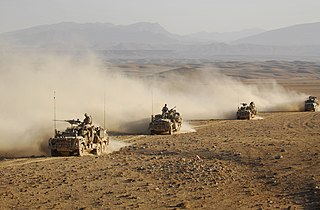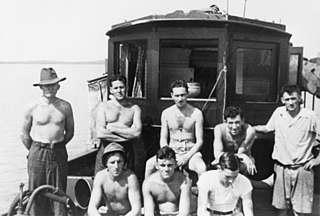 W
WThe special forces of the Australian Defence Force are units of Special Operations Command and associated units of the Royal Australian Navy and the Royal Australian Air Force that conduct and or support special operations to advance and protect the national security of the Commonwealth of Australia. The special forces of Australia have a lineage to a variety of units raised in the Second World War such as the Independent and Commando Companies, Z Special Unit, Navy Beach Commandos, and the Coastwatchers. Australian special forces have most recently been deployed to Iraq in Operation Okra as the Special Operations Task Group, as the Special Operations Task Group in Afghanistan, in Afghanistan in support of the Australian Secret Intelligence Service and regularly for counter-terrorism pre-deploy to locations of major domestic events throughout Australia in readiness to support law enforcement such as the 2014 G20 Brisbane summit.
 W
WThe 1st Commando Regiment is an Australian Army Reserve special forces unit part of Special Operations Command with an integrated structure of regular (full-time) soldiers and reserve (part-time) soldiers, which together with the full-time Australian Army 2nd Commando Regiment, provides the Commando capability to Special Operations Command. Raised in 1955 it is the oldest unit within Special Operations Command and in 2008 deployed to Afghanistan to become the first Australian Army Reserve force element on combat operations since World War II.
 W
WThe 2nd Commando Regiment is a special forces unit of the Australian Army, and is part of Special Operations Command. The regiment was established on 19 June 2009 when the 4th Battalion, Royal Australian Regiment (Commando) was renamed. It is based at Holsworthy, New South Wales. The 2nd Commando Regiment often trains and deploys with the Special Air Service Regiment, is highly regarded by coalition special operation forces abroad, and has been involved in operations in East Timor, Iraq and Afghanistan, where it was used in a direct action warfighting role. It has also been involved in a number of domestic security operations including the 2006 Commonwealth Games and the 2014 G20 Leaders Summit.
The 4th Battalion, Royal Australian Regiment was an Australian Army infantry battalion and part of the Royal Australian Regiment. The battalion was formed on 1 February 1964 and was renamed the 2nd Commando Regiment on 19 June 2009.
 W
WThe 171st Aviation Squadron is an Australian Army helicopter squadron equipped with S70A Black Hawk helicopters and provides support to the Special Operations Command. The squadron is based at Luscombe Airfield, Holsworthy Barracks, Sydney and forms part of the 6th Aviation Regiment.
 W
WNo. 200 Flight was a Royal Australian Air Force special duties flight of World War II. The flight was formed in February 1945 to support the Allied Intelligence Bureau (AIB) and saw action over Borneo and the Netherlands East Indies (NEI) from March that year until the end of the war in August. No. 200 Flight was disbanded in December 1945.
 W
WThe Australian Defence Force Parachuting School is an Australian Army unit part of the Defence Special Operations Training and Education Centre (DSOTEC) that provides training in parachuting techniques, develops parachute doctrine and techniques and conducts trial-evaluations of parachute systems and associated equipment. The school is based adjacent to HMAS Albatross, Nowra, New South Wales.
 W
WThe Australian Defence Force School of Special Operations is an Australian Army training unit part of the Defence Special Operations Training and Education Centre (DSOTEC) responsible for the recruitment, selection, training, education and trade management of all Special Operations Command (SOCOMD) personnel. It is based at Holsworthy Barracks, New South Wales. The school was established on 19 November 2019 following the renaming of the newly formed Special Operations Training and Education Centre.
 W
WThe Australian Federal Police (AFP) is the national and principal federal law enforcement agency of the Australian Government with the unique role of investigating crime and to protect the national security of the Commonwealth of Australia. The AFP is an independent agency of the Department of Home Affairs and is responsible to the Minister for Home Affairs and accountable to the Parliament of Australia. As of October 2019 the Commissioner of the Australian Federal Police is Reece Kershaw, formerly the Northern Territory Police Commissioner.
 W
WThe Clearance Diving Branch is the specialist diving unit of the Royal Australian Navy (RAN) whose versatile role covers all spheres of military diving, and includes explosive ordnance disposal and maritime counter-terrorism. The Branch has evolved from traditional maritime diving, and explosive ordnance disposal, to include a special operations focus.
 W
WThe Coastwatchers, also known as the Coast Watch Organisation, Combined Field Intelligence Service or Section C, Allied Intelligence Bureau, were Allied military intelligence operatives stationed on remote Pacific islands during World War II to observe enemy movements and rescue stranded Allied personnel. They played a significant role in the Pacific Ocean theatre and South West Pacific theatre, particularly as an early warning network during the Guadalcanal campaign.
 W
WOperation Copper was carried out by the Allied commando unit Z Special Unit, during World War II. The objective of the mission was to investigate the Japanese defences on Muschu Island, capture a Japanese officer for interrogation and discover the location of two naval guns on the island that covered the approaches to Wewak Harbour. Eight commandos were landed as part of the operation; only one survived.
 W
WArthur Reginald Evans, DSC was an Australian coastwatcher in the Pacific Ocean theatre in World War II. He is chiefly remembered for having played a significant part in the rescue of future US President John F. Kennedy and his surviving crew after their Motor Torpedo Boat, PT-109, was sunk by enemy action in August 1943.
 W
WCommander Eric Augustas Feldt was an officer in the Royal Australian Navy and the director of the Coastwatchers organisation for much of the Second World War.
 W
WThe Fraser Commando School (FCS) was the main Services Reconnaissance Department training facility after training operations were transferred from the Z Experimental Station in October 1943.
 W
WHolsworthy Barracks is an Australian Army military barracks, located in the Heathcote National Park in Holsworthy approximately 25 kilometres (16 mi) from the central business district, in south-western Sydney, New South Wales, Australia. The barracks is part of the Holsworthy military reserve, which is 22,000-hectare (54,000-acre) training area and artillery range for the Australian Army, established in the 1880s and been in active use since World War I. Following World War II it became a major base for the permanent component of the Australian Army in New South Wales. Holsworthy Military Airport is also located in the reserve. Activities carried out on the base include the use of firing ranges, chemical weapons testing, fire training, vehicle maintenance, and bulk chemical storage and distribution from numerous above ground and underground storage tanks.
 W
WOperation Jaywick was a special operation undertaken in World War II. In September 1943, 14 commandos and sailors from the Allied Z Special Unit raided Japanese shipping in Singapore Harbour, sinking six ships.
 W
WThe MV Krait is a wooden-hulled vessel famous for its use during World War II by the Z Special Unit of Australia during the raid against Japanese ships anchored in Singapore Harbour. The raid was known as Operation Jaywick.
 W
WM Special Unit, was a joint Allied special reconnaissance unit, part of the Services Reconnaissance Department (SRD), in the South West Pacific theatre of the Second World War. A joint Australian, New Zealand, Dutch and British military intelligence unit, it saw action in New Guinea and the Solomon Islands between 1943–1945, against the Empire of Japan.
 W
WThe National Security Committee (NSC), also known as National Security Committee of Cabinet, is the peak decision-making body for national security and major foreign policy matters in the Australian Government. It is a committee of the Cabinet of Australia though decisions of the NSC do not require the endorsement of the Cabinet itself.
 W
WNo. 4 Squadron is a Royal Australian Air Force squadron composed of the air force special forces Combat Controllers, aircrew who operate the Pilatus PC-21 aircraft and instructors for the Australian Defence Force Joint Terminal Attack Controller (JTAC) course.
 W
WRandwick Army Barracks is a military base in Sydney, Australia. It is the base for a number of support and Australian Army Reserve units.
 W
WOperation Rimau was an attack on Japanese shipping in Singapore Harbour, carried out by an Allied commando unit Z Special Unit, during World War II using Australian built Hoehn military MKIII folboats. It was a follow-up to the successful Operation Jaywick which had taken place in September 1943, and was again led by Lieutenant Colonel Ivan Lyon of the Gordon Highlanders, an infantry regiment of the British Army.
 W
WDuring World War II the Royal Australian Navy (RAN) formed beach commando units to go ashore with the first wave of amphibious assaults. They would conduct local reconnaissance, signpost the beaches, control boat traffic, and communicate with the maritime forces. These were known as Royal Australian Navy Beach Commandos. They took part in the Borneo campaign.
 W
WOperation Source was a series of attacks to neutralise the heavy German warships – Tirpitz, Scharnhorst and Lützow – based in northern Norway, using X-class midget submarines.
 W
WThe Special Air Service Regiment, officially abbreviated SASR though commonly known as the SAS, is a special forces unit of the Australian Army. Formed in 1957, it was modelled on the British SAS sharing the motto, "Who Dares Wins". The regiment is based at Campbell Barracks, in Swanbourne, a suburb of Perth, Western Australia, and is a direct command unit of the Special Operations Command. It has taken part in operations in Borneo, Vietnam, Somalia, East Timor, Iraq and Afghanistan, as well as many other peacekeeping missions. The SASR also provides a counter-terrorist capability, and has been involved in a number of domestic security operations.
 W
WThe Special Operations Command (SOCOMD) is an Australian Defence Force command that was established on 5 May 2003 to unite all of the Australian Army's special forces units and by 2008 was fully operational. Australia's Special Operations Command is of equivalent status to Australia's Fleet, Forces and Air Commands. It is modelled on the equivalent commands in the United States and British military forces, and is led by a major general as Special Operations Commander Australia (SOCAUST).
 W
WThe Special Operations Engineer Regiment (SOER) is a specialised unit of the Australian Army. The Regiment forms part of the Special Operations Command. The unit was formed in 2002 as the Incident Response Regiment (IRR), they are deployed to respond to chemical, biological, radiological, nuclear or explosive incidents. The Regiment was transferred into the newly raised Special Operations Command in 2003. In 2010 and 2011 its role changed to supporting the army's special forces units, and it was renamed accordingly.
 W
WThe Special Operations Logistic Squadron (SOLS) is an independent and specialised unit of the Australian Army based in Sydney, New South Wales which provides specialist logistical support to all units of the Special Operations Command in support of special operations. It has developed a "jack of all trades" capability across military logistics including rapid prototyping and metal fabrication.
 W
WZ Special Unit was a joint Allied special forces unit formed during the Second World War to operate behind Japanese lines in South East Asia. Predominantly Australian, Z Special Unit was a specialist reconnaissance and sabotage unit that included British, Dutch, New Zealand, Timorese and Indonesian members, predominantly operating on Borneo and the islands of the former Netherlands East Indies.